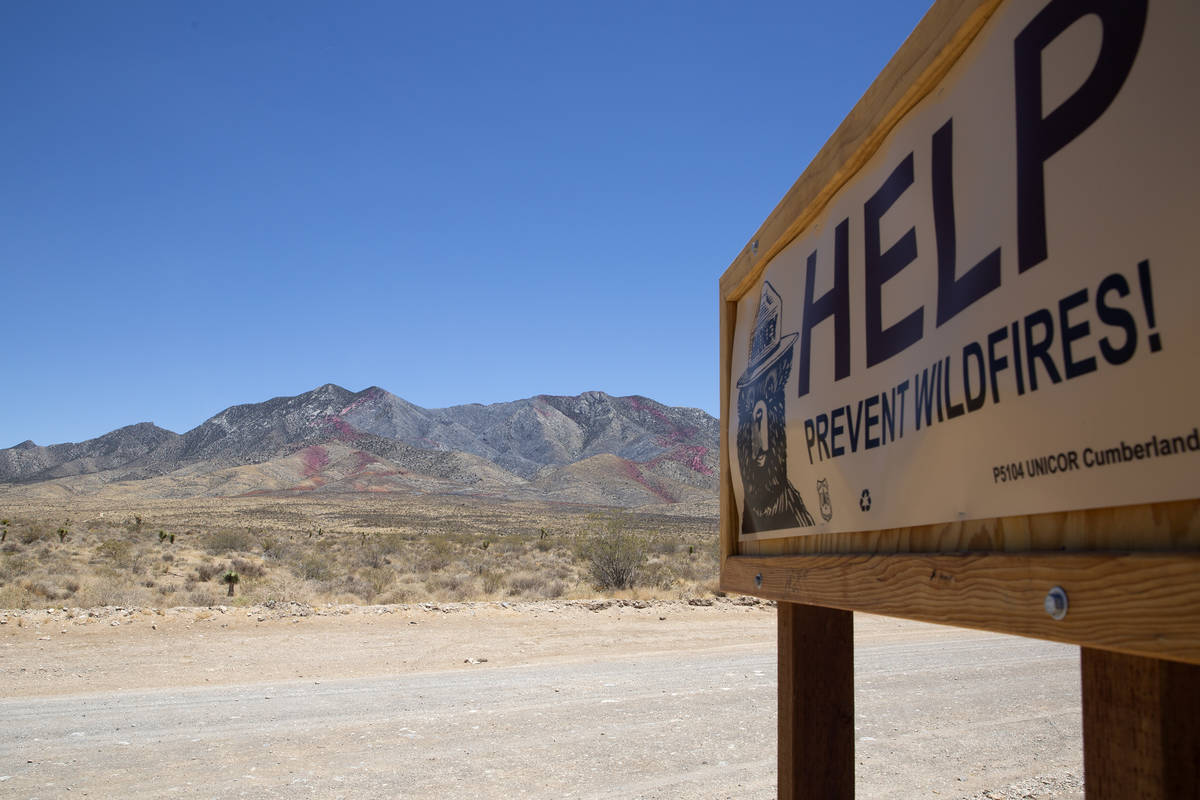Sandy Valley wildfire west of Las Vegas now 90 percent contained
The wildfire that first broke out Thursday west of Las Vegas is now 90 percent contained, with full containment expected by June 17, officials said Sunday.
The Sandy Valley Fire started when target shooting caused a spark in dry vegetation around 1:35 p.m. Thursday in the Potosi Mountain area, about 20 miles west of Las Vegas.
The fire was reported near State Route 160 on Sandy Valley Road and is on Bureau of Land Management and U.S. Forest Service land. It was reported to be 60 percent contained as of 7 p.m. Saturday, as about 200 firefighters worked to suppress the blaze.
The blaze has burned about 1,380 acres, according to the National Interagency Fire Center website.
“Winds up to 35 miles per hour tested containment lines today and they held which makes us optimistic as we head into higher temperatures this week,” Tyler Hecht, BLM Southern Nevada District Fire Management Officer, said in a statement. “Because of this, we were able to begin to make firefighters available for other fire assignments.”
Firefighters on Saturday used helicopters to take crews to higher elevations in hopes of creating a fire line to the east and establish access on the north and south sides of the blaze.
No injuries have been reported, and no buildings were immediately threatened as of Saturday, the agency said. The Sandy Valley and Potosi Pass roads are only open to residents.
On average, 74 percent of fires on BLM-managed land in Southern Nevada are human-caused. Of human-caused fires since 2007, target shooting has caused 27 percent, officials said.
Contact Briana Erickson at berickson@reviewjournal.com or 702-387-5244. Follow @ByBrianaE on Twitter.























